
© 2010-2022 by Fine Arts of the Southwest, Inc. All rights reserved.
Unauthorized reproduction or use is strictly prohibited by law.
A unique Hopi Polychrome pottery bowl by Nampeyo with a stylized pictorial design of the Fred Harvey Company’s "Thunderbird" logo, c. 1900-1905
This bowl is a rare and exotic bird indeed. It is a direct 20th Century re-interpretation or “revival” of the 14th-17th Century Hopi Sikyatki Polychrome pottery tradition with a fascinating and uniquely modern American design twist.
In the closing decades of the 19th Century, Nampeyo and other Hopi potters revived the magnificent ancient tradition
of Hopi Sikyatki Period pottery (1375-1625 A.D.), with its daring swooping low-profile jar shapes and prolific and highly-abstracted bird and animal designs. Too, the specific technical innovations that helped make Sikyatki pottery so
great such as its fine, untempered paste, floated self-slipping and its utlra-high temperature firing with lignite coal;
a treacherous and complex process that when done right as done here yields extraordinary results such as very hard
fired vessel walls and gorgeous whitish yellows pinkish firing clouds or blushes as seen here.
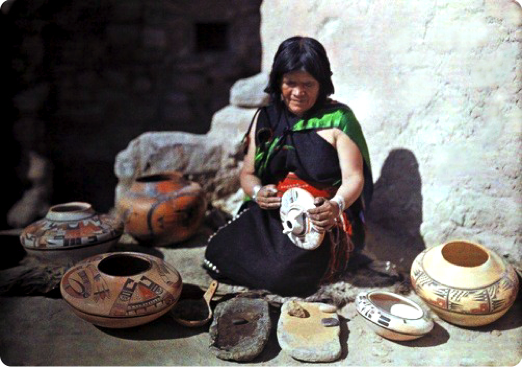
Nampeyo demonstrating pottery making at Hopi House, c. 1905.
Photo source and © Suduva
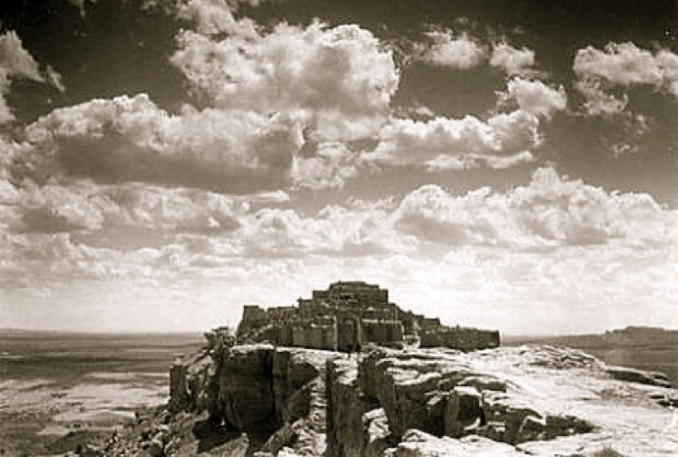
At left, a modern day view of Hopi House. At right, Nampeyo and her family at their summer artist residency at Hopi House c. 1907. In the photo are Nampeyo, her husband Lesou, their eldest daughter Annie, their second daughter Nellie, their son William, their third daughter Fannie and possibly Annie’s infant daughter, Rachel.

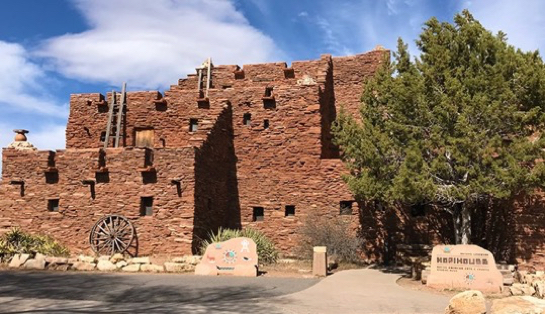
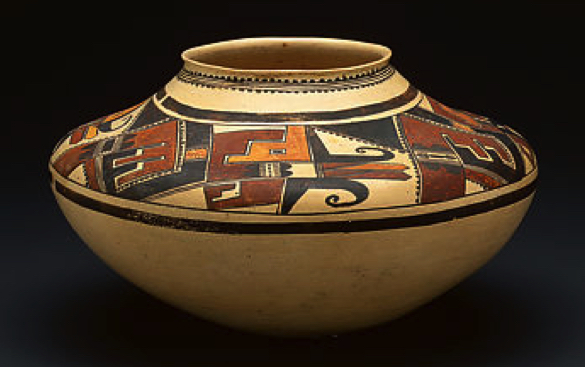
Sikyatki Polychrome pottery jar with abstract bird and feather designs, c. 1450-1500 A.D.
Photo source and © The Metropolitan Museum of Art
The famous Fred Harvey Company “Thunderbird” logo which appeared on everything from Indian Detours touring cars to brochures to posters to menus, matchbooks, sales receipts and business cards. At above center is the original Indian Detours carved wood sign from the Fred Harvey Company's La Fonda Hotel in Santa Fe, NM which still hangs in the hotel lobby.
View of Walpi Village on the Hopi First Mesa, near Nampeyo's home and the ancient ruins of Sikyatki.
Nampeyo completely mastered these techniques and this, combined with her extraordinary visual imagination, taking the great design motifs of Sikytaki pottery and interpreting and reinterpreting them through her own extraordinary creative intelligence and imagination are what thrust her indisputably to the forefront of Hopi pottery making in the early 20th Century. She was essentially the first Native American "rock star" with an audience that stretched across the country and over the ocean. Anthropologists, archaeologists, ethnologists, other academics, noted Western painters, photographers and curious intrepid tourists all made the long difficult pilgrimage to the remoteness of the Hopi mesas to see her work and to purchase pieces directly from her or from the various area trading posts that sold her work. And this is precisely where the specifically-painted design of this bowl comes in. Bird designs abound in Sikyatki pottery and other Hopi pottery, but as seen on the Sikyatki jar above, these are typically far more abstracted and stylized than in this particular design.
This design is a more straightforward and distintly modern presentaion of what we believe to be a particular iconic figure. This particular design strongly appears to be Nampeyo’s personal interpretation and presentation of the famous Fred Harvey Company “Thunderbird” logo in both its general appearance and the specific color palette used. It was very likely commissioned by or for one of the Harvey Compeny executives or family members or important clients. It could also have been commissoned from Nampeyo for the Harvey Company by one of the local Hopi area Indian Traders such as Thomas Varker Keam, J.L. Hubbell or Nampeyo's brother, Thomas Polacca or it could possibly have been made during one of Nampeyo’s annual stays at The Grand Canyon’s Hopi House built by the Fred Harvey Company as a trading post and demonstration facility directly across from the Harvey Company's prominent Hotel El Tovar directly on the canyon rim. Nampeyo gave regular pottery making demonstrations at Hopi House each summer from 1905-1907.
The resemblance to the Harvey Indian Detours thunderbird logo is quite striking and clear. Two of our most experienced and knowledgable Santa Fe historic Pueblo pottery experts agree completely with this attribution. The hand of Nampeyo is most clearly evident here, not only in the superb formation, polishing and firing of the pottery vessel, but in the particulars of the painted design, the wonderful use of positive and negative design spaces to thrust the image forward, the "streaky" red paint and the double unbroken black framing lines. The particular colors Nampeyo used in the bowl are also rooted in ancient Hopi pottery types, the bright pumpkin yellow color occurs in a subtype of Sikyatki Polychrome known as Kawaika-a Polychrome and also in another Hopi variety, Bidahochi Polychrome. All things considered, one could say that this bowl is
a cultural linkage of sorts between the ancient Native past and the modern commerical American future.
The bowl measures 7 1/2” in diameter and is 3” in height. It is in remarkable, nearly pristine original condition and particularly so for its nearly 120 years of age. There is one very small chip in the rim. A thorough examination under Ultraviolet light reveals no evidence at all of any restoration or overpainting. There is also the dark pencil inscription "#4" on the bottom of the bowl. This style of notation is a common old Indian trading company technique.
This bowl is a unique piece from a unique past in a unique place made by a unique artist. A fascinating cross cultural object and a significant part of the amazing history of the American Southwest. Are you listening Metropolitan Museum of Art?
SOLD
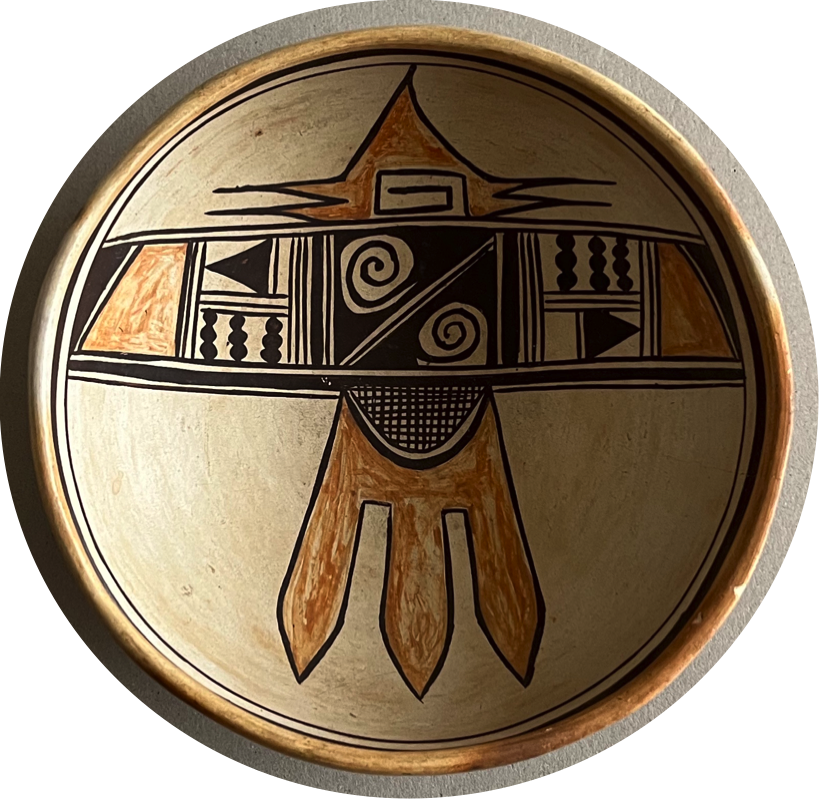
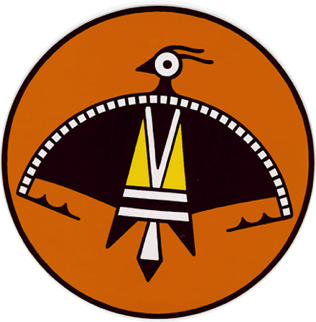
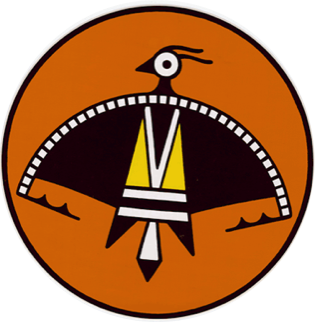
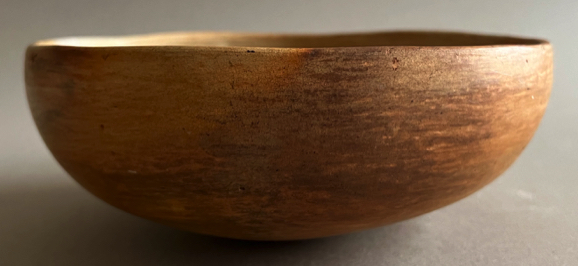
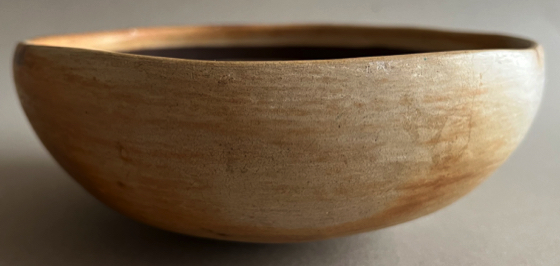
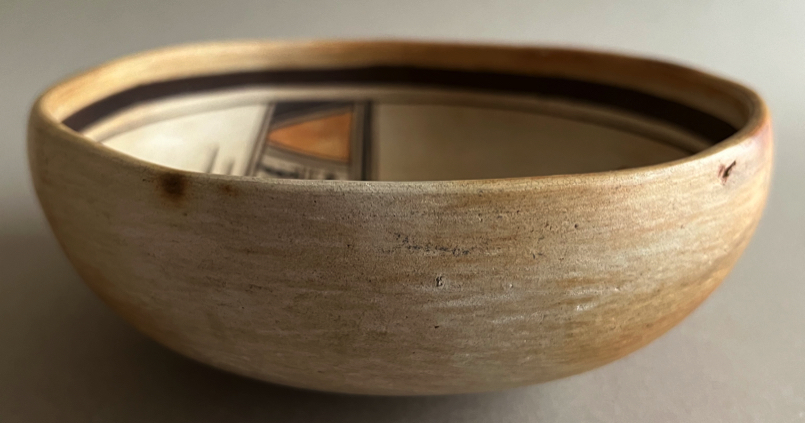
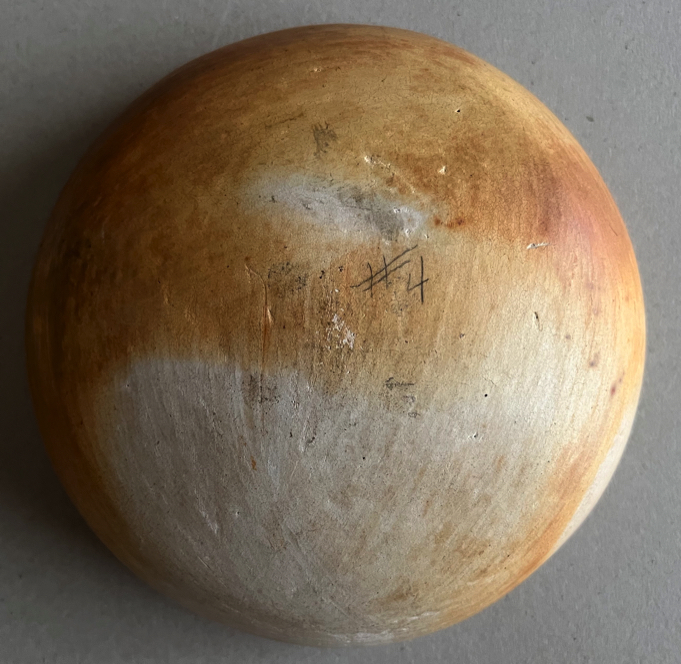


“When I first began to paint, I used to go to the ancient village and pick up
pieces of pottery and copy the designs. That is how I learned to paint. But now,
I just close my eyes and see designs and I paint them.”
-Nampeyo


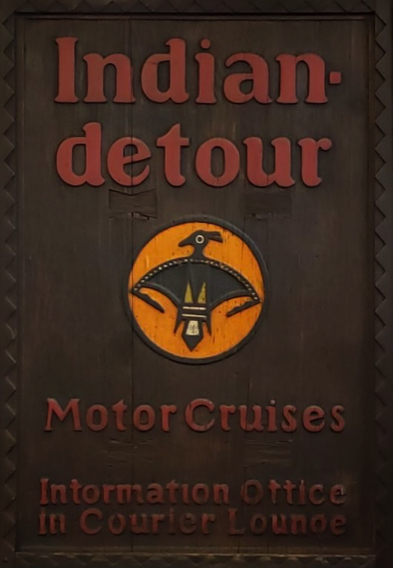
Nampeyo, a Fred Harvey Company "Star"
Nampeyo was one of the Fred Harvey Company’s premier star attractions. Their agents were eager to acquire her pottery pieces for sale at their network of trading posts. They encouraged and paid generously for her and her family to spend time at Hopi House making general appearances and giving pottery demonstrations which the company promoted extensively. They widely featured her work and photos of her in various Harvey Company publications and even used her image and name on company branded postcards and playing cards. It only stands to reason that someone associated with The Fred Harvey Company would want their star pottery artist to make a piece of pottery featuring her version of their famous logo. If only we knew more precise details about with whom and exactly how this came to pass.


At left and above, original Fred Harvey Company commercial postcards featuring Nampeyo.